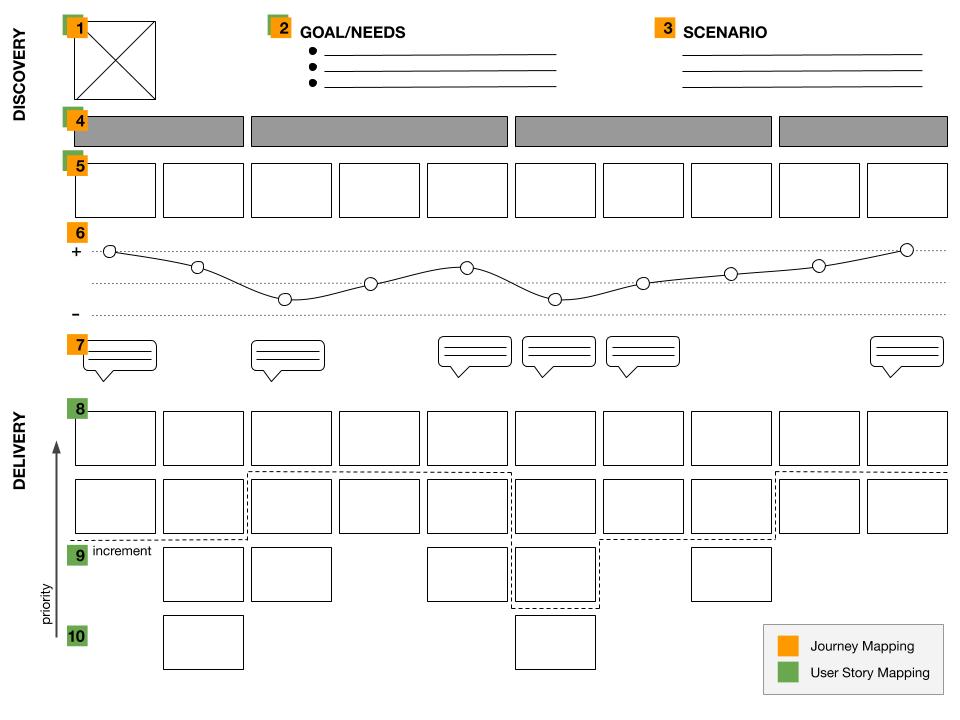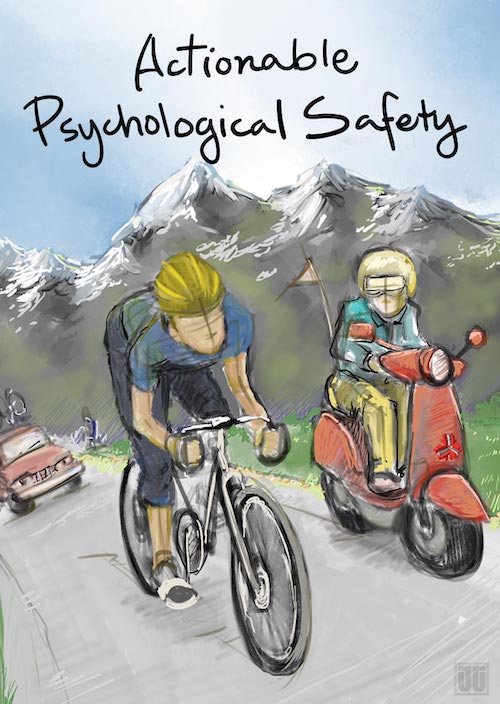Modern Agile ways of working emphasize the benefits of bringing together business representation (Product owners) with development teams. This means everyone is focused on a shared understanding of “value”: identifying who the product is for, what the user is trying to achieve, and how this benefits the business/organization.
Just as Agile practitioners have matured, business and product practitioners have also evolved, acknowledging the need to observe, to understand, to hypothesize, and to get feedback from customers. Design professionals realize the important truth: we are not our users. User experience professionals are using design thinking methods to glean insights into how to make users awesome! And yet, there is a natural tension between upfront understanding and getting real feedback.
How does a team balance discovery and delivery?
Let’s take an example:
- Imagine an organization who is the leader in the industry but is struggling to modernize in both its design and delivery practice.
- Their product group is trying to evolve from sales-driven, taking a variety of orders, to product-driven, offering innovative solutions that delight customers: not a “faster horse” but a motor car. This organization needs to make discoveries for customers.
- Their technology group needs to embrace technology as a legitimate channel that services customers, not just a platform that supports operations. And how to implement this shift with limited resources: a small technology team surviving on a monolithic architecture. This organization also needs to deliver.
This organization needs both to drive sales through discovery and to easily, gracefully meet the needs of users through delivery. Day-to-day it’s common that product owners have a hard time negotiating with hundreds (almost thousands) of customers. And day-to-day it’s hard for technology professionals to deliver confidently with infinite scenarios.
What would it take to work as one product team focused on wrangling many customers and customizations?
Bridging Design Thinking and Agile Delivery can help solve the challenges for organizations like the one we imagined above, using two techniques: Journey Mapping and User Story Mapping, each of which I’ll highlight more in future posts.
-
Journey Mapping is a common Design Thinking and User Experience technique that helps product teams understand real and ideal users (through the construction of “personas”).
-
User Story Mapping is a common Agile Delivery technique by Jeff Patton that drives the big picture view for delivery teams while enabling milestone planning. From User Story Mapping, delivery teams can understand the scope of the product and therefore, plan healthier and safer technology solutions (like domain-driven and service-oriented architectural patterns, or implementing object-oriented patterns day-to-day in code).
Conjointly, Journey Mapping and Story Mapping can help product teams realize user value through the enablement of fast, responsive delivery. Yet, many agile teams struggle to incorporate design thinking into their agile delivery.
How can we integrate Journey Mapping and User Story Mapping in order to bridge Discovery to Delivery?

- Persona or User picture: visualize who this product is for and their point-of-view experience
- Persona or User goals: identify why the actor is trying to achieve, i.e. needs, expectations
- Persona or User scenario: identify what situation the map addresses associated with the actor goals
- Backbone or Journey Phases: these are big activities or high-level stages of actor steps
- Narrative, Activities, or Actions: the behaviors and steps taken by the actor within the phase
- Emotional experience: the “ups” and downs” as the user moves towards their goal
- Thoughts: what the persona or user is thinking during specific steps, helping to provide context to drive empathy
- Details or Tasks: options for the step within the narrative
- Increment: craft viable releases based on target outcomes
- Prioritize: focus on overarching outcomes and what users need to do and see to achieve those outcomes
A future agile approach brings together not just product owners and development teams but also user experience techniques to validate user feedback into delivery as quickly as possible. You can look forward to my future posts on “Bridging Agile Delivery and Design Thinking” where I’ll talk more about how more of these techniques come together.
For further reading:
- Sierra, Kathy. Badass: Making Users Awesome. 2015.
- Royce, Winston. “Managing the Development of Large Software Systems.” August 1970. Managing the Development of Large Software Systems
- Patton, Jeff. User Story Mapping. 2014.
- Gibbons, Sarah. Nielsen Norman Group. “Journey Mapping 101.” December 9, 2018. Journey Mapping 101
- Jeff Patton & Associates. “Dual Track Development.” Dual Track Development





